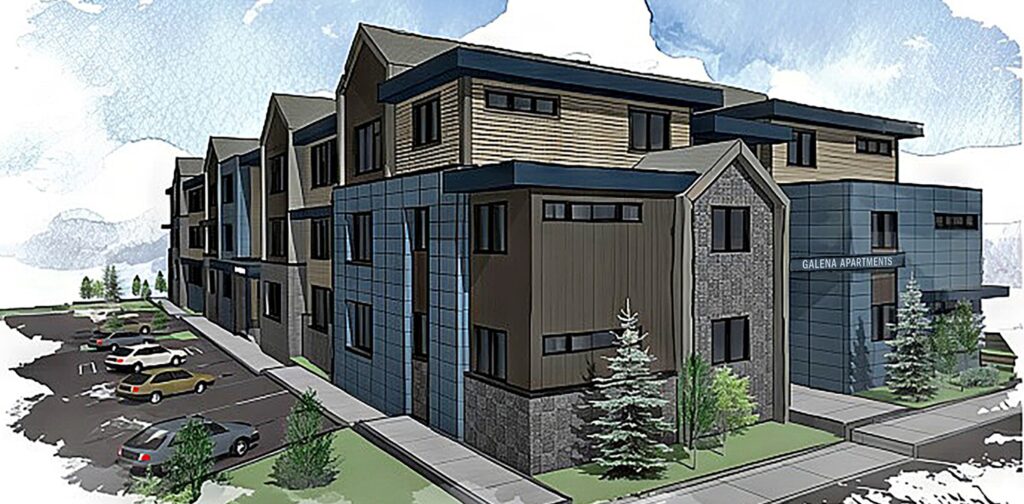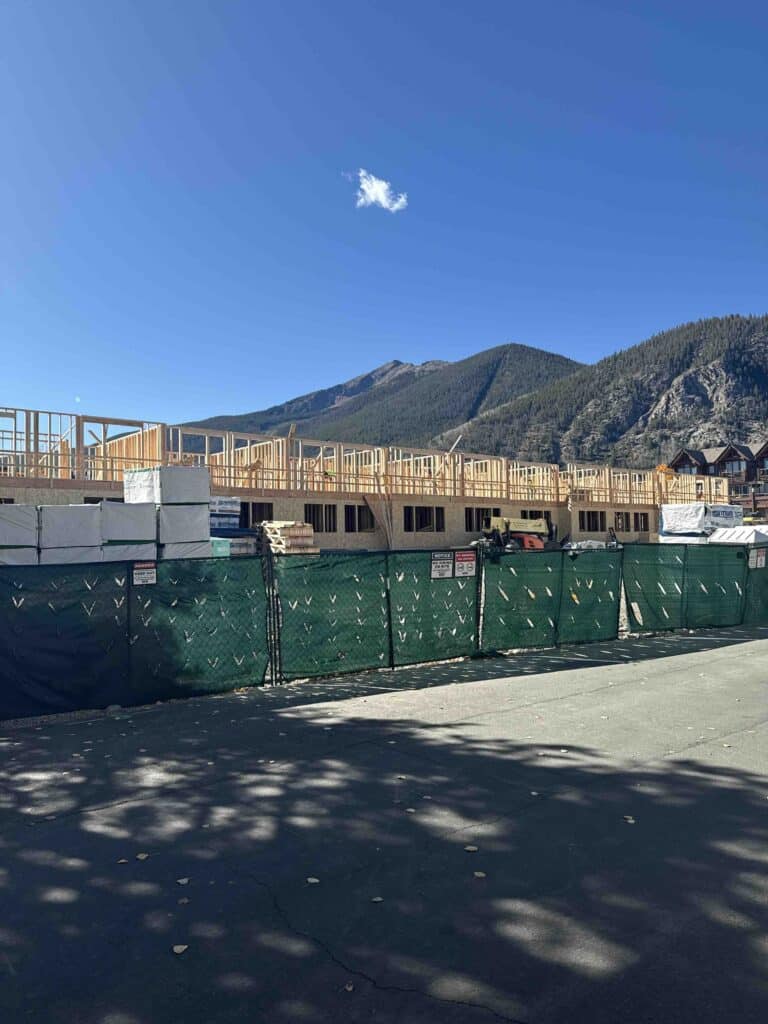An Innovative Structure in Colorado May Provide Model for Workforce Housing Nationwide

By Mark Fogarty
8 min read

In Colorado, ongoing tensions between skyrocketing housing costs and growing labor shortages have put a significant strain on the state’s workforce housing availability, particularly in its mountainous resort communities. This has led to a number of cutting-edge solutions within the Centennial State that target workforce housing, from land banking to Colorado’s novel Middle Income Housing Tax Credit.
Yet another statewide approach to alleviating the workforce housing challenges arrived in 2022 with the establishment of the Colorado Middle Income Housing Authority (MIHA), a unique public entity meant to facilitate housing for residents at 80 to 120 percent of Area Median Income (AMI).
Now, MIHA has just broken ground on its first deal, a partnership with developer NHP Foundation to build 54 workforce housing rentals in Frisco, CO.
Leveraging Unique Funding Sources to Fulfill Urgent Need
The deal for that development, Galena Apartments, has quite an innovative structure. “We’ve got a few firsts in there,” says Neal Drobenare, senior vice president, acquisitions at NHP Foundation. Notably, according to Drobenare, Galena is the first affordable multifamily project in the country to leverage 501 (c)(3) tax-exempt bonds for middle-income housing construction. Additionally, NHP is utilizing its S&P AA-rating to enhance the $18 million in bonds and guarantee investor repayment, another first.
Drobenare says that the credit enhancement “gives us a flexibility that an asset-only transaction wouldn’t have,” since it provides bondholders recourse to the company itself as well as to the project. “Using our credit rating put us in a position to make this financing happen with the funds that were available. We’re seeing it as the first step to doing deals that require very little public subsidy.”
Without the bond structure, “it would be a long row to hoe for us,” Drobenare muses.

Drobenare says that this structure, though novel, is replicable, and that NHP plans to pursue more deals like Galena’s in the future. In part, he attributes this to the rising demand nationwide for middle-income housing, particularly in communities where housing costs have vastly outpaced incomes. For example, in Frisco — a ski resort town just north of Breckenridge and an hour and a half from Denver — some teachers have had to sleep in their cars due to the high cost of homes.
“Now, 33 percent of people in the 80-120 percent class are rent burdened,” Drobenare says. This is exacerbated by what Drobenare says is a 17 percent drop in statewide middle-class homeownership, creating rental demand and an upward pressure on prices. This leaves essential workers “priced out by millionaires and billionaires in their second homes,” Drobenare says, noting that this stress on the middle class in turn “stresses us as a nation. It was something we wanted to address.”
Amplifying the housing shortages of Colorado’s mountain towns are the building challenges, which are severely limited due to difficult road access and restrictive construction seasons. “Frisco is one of the most expensive construction markets in the United States,” Drobenare says. “We’re paying almost $500 a square foot. It’s a town in the mountains, hard to get to, hard to get materials to, short building season, and very little work force. Much of the workforce there, we’re competing with luxury second home builders. So, it’s a challenge for everyone who’s building out there.”
That has required subsidies which may not be necessary in less expensive construction markets. “Right now, we’re doing a follow up deal in Minnesota where we’re going to do 200 units with no soft subsidy from state or local government,” Drobenare says. “We think that’s a much more sustainable model of housing and one in which we can mix folks at 60 percent AMI with folks at 120 percent AMI, making for a better community.”
The deal in Minnesota will use the same type of structure as the one in Frisco, Drobenare explains. “We’re able to do this type of housing only because a local government has identified this area of housing as being an unmet need they’re trying to address. We can step in and lessen their burdens by using these types of tax-exempt bonds. We don’t need soft money in markets where rentals are relatively high and costs not as high.”
In Galena’s case, the local governments were the town of Frisco and Summit County.
Galena will provide 54 units to the town of Frisco. Additionally, NHP will be doing a 50 unit nine percent Low Income Housing Tax Credit deal (the tax credits were awarded recently) adjacent to Galena Apartments on the town’s Main Street.
“The two projects address the entire spectrum of rental housing needs the town has identified,” Drobenare says.

Each projects’ total development cost will come to about $36 million.
At Galena, $18 million will come from the bonds (at 4.5 percent interest), $8 million from the town, and about $8 million will be spent on the infrastructure, according to Drobenare. $4 million of the project’s infrastructure costs is supported by the Colorado Department of Local Affairs’ Strong Communities Infrastructure Grant Program.
NHP plans to use this bond structure on several developments in Minnesota, an additional one in Summit County near Frisco, and an affordable townhouse project in Denver. “We’re evaluating other opportunities as they come up,” Drobenare says. “We see this missing middle housing as a key part of our strategy moving forward and will really be a point of emphasis.”
Replicating the Model
Drobenare says that this is just the beginning for the partnership that coalesced around Galena. “In many ways, this will be foreshadowing what will be happening in other markets where folks at the very high end of the income spectrum are basically sucking up resources and making it difficult for middle-income projects to be built. There’s less contractors and subcontractors and that’s part of the reason we stepped forward and started to do this. We didn’t see a lot of people doing this, either in Colorado or the rest of the nation.”
Unit sizes at Galena are mainly one- and two-bedroom, although Drobenare says the next project will include a “significant” number of three bedrooms as well.
Galena is also an energy efficient project, using the Net Zero Energy Ready standard.
Drobenare praised the partners in the public-private deal: the town, county and state. “At different times, each of them has stepped up,” he says. “The town engaged with us to draft and pass an affordable housing incentives act. That really made this project and our other project viable and hopefully will aid other affordable housing developers as well.”
The county helped NHP acquire the site through a $1 a year long-term lease
Construction is planned to take 18 months, which would put completion around the start of 2027.
Why Colorado Targets Middle Income Housing
The Middle Income Housing Authority was created by the Colorado State Legislature in 2022 “to support the creation, maintenance, ownership, and operations of rental housing for middle-income individuals and families throughout Colorado,” says Peter LiFari, chair of MIHA’s board and executive director of Maiker Housing Partners. MIHA accomplishes this mission by issuing tax-exempt bonds, acquiring or constructing rental housing, and entering into public-private partnerships.
MIHA’s work will specifically target middle-income individuals and families earning 80 to 120 percent AMI, or up to 140 percent AMI in resort communities. Depending on local need, LiFari says that a portion of the units may be unrestricted to help with debt service. Otherwise, rents for income-restricted units must be at least 10% below market.
MIHA is, by all accounts, still in the early stages of its work — though this hasn’t stopped them from making an impact. By June 2023, MIHA “selected six proposed housing developments with the potential to produce up to 1,000 housing units across Colorado,” according to LiFari. “MIHA then focused on industry education and working with the selected projects to identify gap funding solutions.”
Galena was the first project in the state to receive support via MIHA-administered sale of tax-exempt bonds. LiFari says that MIHA is poised to continue this work, “currently underwriting a $17 million bond for Nuche Village with 75 rental units in Granby, a modular construction project from Colorado-based Vederra Modular. The project will be the first owned and managed by MIHA.”
“By investing in housing, MIHA invests in Colorado communities so the people who teach our kids, heal our loved ones and keep our towns vibrant can build their lives in the same places they uplift daily,” LiFari says.


